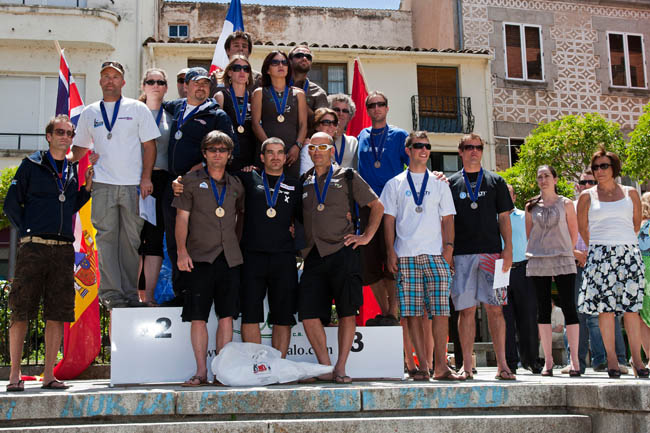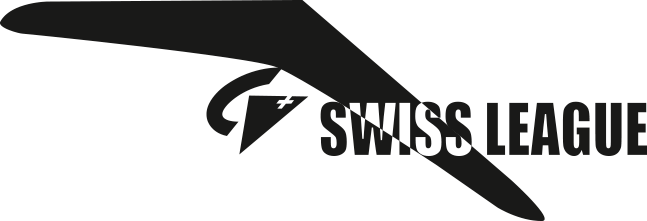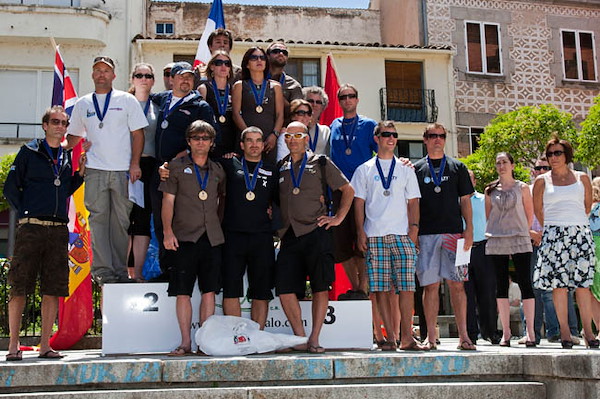Competition News
Weltmeisterschaften 2011 in Piedrahita
Seit den Europameisterschaften 1998 wurde im bekannten Fluggebiet Piedrahita kein Cat. 1 Event (WM/EM) mehr durchgeführt. Die älteren Piloten unter uns erinnern sich aber: Es gab damals auch ein neues Gleitschirmmodell, das besser und schneller war und viele Sicherheitsprobleme mit sich brachte.
Der Sicherheit im Gleitschirmsport wird mittlerweile aber ein weitaus grösseres Gewicht beigemessen. Zum ersten Mal an einem Gleitschirmwettkampf mussten alle Piloten mit normierten Helmen, Gurtzeugen und Gleitschirmen fliegen. Bei den Gleitschirmen handelt es sich um die erst gerade eingeführte Competition Class, für die der Hersteller seine Modelle selber testen muss. Das Modell muss 60 Tage vor Wettkampfbeginn mit allen Dokumentationen inkl. den Testvideos angemeldet werden, 30 Tage vor Beginn muss es in den Händen des Piloten sein.
Zwischen den Modellen von 1998 und heute können Parallelen gezogen werden: Beide Modelle waren viel schneller, als alle bisher da gewesene, und - meines Erachtens wichtiger - beide Modelle zeigen dem nicht-Profi zu wenig an, bevor sie einklappten. Jedenfalls waren die resultierenden Sicherheitsprobleme in etwa die selben.
Nun, wie gesagt, hat sich das Sicherheitsdenken stark geändert. Im Gegensatz zu 1998 wurde dieses Jahr zum ersten Mal in der Geschichte des Gleitschirmsportes eine WM abgebrochen. Ich zitiere hier das Schreiben des CIVL-Präsidenten:
Due to recent incidents at the 12th FAI Paragliding World Championship in Piedrahita, Spain the CIVL Bureau has temporarily suspended the certification of Competition Class Paragliders with immediate effect.
This suspension means that paragliders classified as Competition Class under Rule 12.1.1.2 of Section 7B of the FAI Sporting Code are not permitted to fly in FAI Category 1 championships for the period of the suspension.
Organisers of FAI Category 2 events are also strongly advised to consider whether Competition Class paragliders should be permitted to compete in events with racing tasks for the period of the suspension.
John Aldridge
President, CIVL
Es ist nun aber komplett falsch, dass die Sicherheitsproblematik mit diesem Schreiben auf das Gleitschirmmodell reduzieret wird. Tatsache ist eine Kombination vieler Faktoren, wobei in erster Linie das Pilotenniveau beachtet werden muss: Selektioniert werden können Piloten, die in der Weltrangliste besser als Rang 800 !! sind oder zwei Flüge über lächerliche 60 km absolviert haben.
Wer meint, dass mit der Einführung einer tieferen Klasse (Serial Class, EN-D oder ähnlichem) alle Probleme gelöst sind, ist beinahe sicher auf dem Irrweg. Die Erfahrung mit Testwettkämpfen hat gezeigt, dass die Serial Class ebenso viele Probleme mit sich bringt. Der englische Teamleader: "Wir hatten zwei Jahre lang nur Serial Class. An den British Nationals hier in Piedrahita hatten wir noch mehr Notschirmöffnungen als heute hier!". Auch am PWC das selbe: Zwei Jahre Testphase. Das Resultat: "1/3 der Piloten mit Serial Class verursachten 2/3 der Zwischenfälle". In etwa das selbe Verhältnis hatten wir diesen Frühling in der Gleitschirmliga.
Die Problematik ist sehr, sehr Komplex. An ein Problem mit Serial Class an internationalen Wettkämpfen möchte ich hier schon vorweg erinnern: EN-D wird bis zum letzten ausgereizt und ganz normal käuflich. Die Problematik wird sich deswegen auf den Normalpiloten verschieben.
Wenn es in diese Richtung gehen soll, dann empfehle ich dringend, sehr dringend, heute EN-D zu kopieren, leicht an den Wettkampf anzupassen und als Competition Class einzuführen. Nur so kann obige Problematik eingegrenzt und schnell genug auf neue Entwicklungen reagiert werden.
Zwei Tasks, gültige Weltmeisterschaft
*****************************************
Wir sind hier nun also nur zwei Durchgänge geflogen, einen ersten über 156km, einen zweiten über 76km. Die Weltmeisterschaften sind damit gültig und wenn man bedenkt, dass es im Pinzgau eine gänzlich ungültige Meisterschâft gegeben hat (Föhn, Regen) und auch an der EM 2010 nur knapp 3 Durchgänge zustande kamen, darf der sportliche Wert nicht allzu tief eingeschätzt werden. Die Tatsache, dass unsere Piloten defensiv geflogen sind, weil man natürlich mit 6 und mehr Durchgängen rechnete, diese Tatsache hatten alle, oder zumindest die führenden Teams.
1 Charles Cazaux FRA 1966
2 Luca Donini ITA1927
3 Andreas Malecki GER1900
4 Josh Cohn USA 1898
5 Peter Neuenschwander SUI 1887
21 Stefan Wyss SUI 1775
37 Michael Sigel SUI 1660
1 Petra Slivova CZE 1646
2 Regula Strasser SUI 1392
3 Kirsty Cameron 1081
1 France 3808
2 Great Britain 3739
3 Switzerland 3710
Der Sicherheit im Gleitschirmsport wird mittlerweile aber ein weitaus grösseres Gewicht beigemessen. Zum ersten Mal an einem Gleitschirmwettkampf mussten alle Piloten mit normierten Helmen, Gurtzeugen und Gleitschirmen fliegen. Bei den Gleitschirmen handelt es sich um die erst gerade eingeführte Competition Class, für die der Hersteller seine Modelle selber testen muss. Das Modell muss 60 Tage vor Wettkampfbeginn mit allen Dokumentationen inkl. den Testvideos angemeldet werden, 30 Tage vor Beginn muss es in den Händen des Piloten sein.
Zwischen den Modellen von 1998 und heute können Parallelen gezogen werden: Beide Modelle waren viel schneller, als alle bisher da gewesene, und - meines Erachtens wichtiger - beide Modelle zeigen dem nicht-Profi zu wenig an, bevor sie einklappten. Jedenfalls waren die resultierenden Sicherheitsprobleme in etwa die selben.
Nun, wie gesagt, hat sich das Sicherheitsdenken stark geändert. Im Gegensatz zu 1998 wurde dieses Jahr zum ersten Mal in der Geschichte des Gleitschirmsportes eine WM abgebrochen. Ich zitiere hier das Schreiben des CIVL-Präsidenten:
Due to recent incidents at the 12th FAI Paragliding World Championship in Piedrahita, Spain the CIVL Bureau has temporarily suspended the certification of Competition Class Paragliders with immediate effect.
This suspension means that paragliders classified as Competition Class under Rule 12.1.1.2 of Section 7B of the FAI Sporting Code are not permitted to fly in FAI Category 1 championships for the period of the suspension.
Organisers of FAI Category 2 events are also strongly advised to consider whether Competition Class paragliders should be permitted to compete in events with racing tasks for the period of the suspension.
John Aldridge
President, CIVL
Es ist nun aber komplett falsch, dass die Sicherheitsproblematik mit diesem Schreiben auf das Gleitschirmmodell reduzieret wird. Tatsache ist eine Kombination vieler Faktoren, wobei in erster Linie das Pilotenniveau beachtet werden muss: Selektioniert werden können Piloten, die in der Weltrangliste besser als Rang 800 !! sind oder zwei Flüge über lächerliche 60 km absolviert haben.
Wer meint, dass mit der Einführung einer tieferen Klasse (Serial Class, EN-D oder ähnlichem) alle Probleme gelöst sind, ist beinahe sicher auf dem Irrweg. Die Erfahrung mit Testwettkämpfen hat gezeigt, dass die Serial Class ebenso viele Probleme mit sich bringt. Der englische Teamleader: "Wir hatten zwei Jahre lang nur Serial Class. An den British Nationals hier in Piedrahita hatten wir noch mehr Notschirmöffnungen als heute hier!". Auch am PWC das selbe: Zwei Jahre Testphase. Das Resultat: "1/3 der Piloten mit Serial Class verursachten 2/3 der Zwischenfälle". In etwa das selbe Verhältnis hatten wir diesen Frühling in der Gleitschirmliga.
Die Problematik ist sehr, sehr Komplex. An ein Problem mit Serial Class an internationalen Wettkämpfen möchte ich hier schon vorweg erinnern: EN-D wird bis zum letzten ausgereizt und ganz normal käuflich. Die Problematik wird sich deswegen auf den Normalpiloten verschieben.
Wenn es in diese Richtung gehen soll, dann empfehle ich dringend, sehr dringend, heute EN-D zu kopieren, leicht an den Wettkampf anzupassen und als Competition Class einzuführen. Nur so kann obige Problematik eingegrenzt und schnell genug auf neue Entwicklungen reagiert werden.
Zwei Tasks, gültige Weltmeisterschaft
*****************************************
Wir sind hier nun also nur zwei Durchgänge geflogen, einen ersten über 156km, einen zweiten über 76km. Die Weltmeisterschaften sind damit gültig und wenn man bedenkt, dass es im Pinzgau eine gänzlich ungültige Meisterschâft gegeben hat (Föhn, Regen) und auch an der EM 2010 nur knapp 3 Durchgänge zustande kamen, darf der sportliche Wert nicht allzu tief eingeschätzt werden. Die Tatsache, dass unsere Piloten defensiv geflogen sind, weil man natürlich mit 6 und mehr Durchgängen rechnete, diese Tatsache hatten alle, oder zumindest die führenden Teams.
1 Charles Cazaux FRA 1966
2 Luca Donini ITA1927
3 Andreas Malecki GER1900
4 Josh Cohn USA 1898
5 Peter Neuenschwander SUI 1887
21 Stefan Wyss SUI 1775
37 Michael Sigel SUI 1660
1 Petra Slivova CZE 1646
2 Regula Strasser SUI 1392
3 Kirsty Cameron 1081
1 France 3808
2 Great Britain 3739
3 Switzerland 3710
Gallery

Comments
As there is already a misunderstanding of this report going on, I like to clarify:
- I was one of very view team leaders in favor of stopping this competition.
- But I think it is really important, that we focus not only on the glider models.
Martin
Martin Scheel on Monday, 11. July 2011, 09:56
New Comment
You need to login in order to post a new comment.










Urs Haari on Thursday, 14. July 2011, 21:50